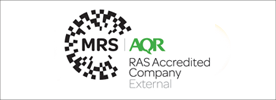
As the healthcare landscape continues to undergo profound shifts, effective workforce management is an important focal point for industry professionals. Healthcare organisations continue to face staffing challenges and operational inefficiencies, prompting surges in innovations to support workforce management. As the demand for high-quality care continues to increase, there is a need for solutions that optimise staffing levels, enhance operational efficiency, and elevate the standard of patient care.
Understanding and adapting to these shifting trends present a unique opportunity for most industries to drive meaningful change. Specifically, by understanding the nuances of workforce management in healthcare, organisations can gain insights and leverage them to shape strategies that drive impactful outcomes.
Challenges
From the fluctuating nature of patient volumes to the perpetual balancing act between efficiency and quality, organisations face a multitude of obstacles that stress the importance of effective workforce management strategies.
- Staffing Demands
- Balancing Efficiency and Quality
- Specialisation and Skill Alignment
The unpredictable nature of patient volumes presents a challenge in ensuring optimal staffing levels to meet patient needs. High patient volumes can lead to increased workloads for existing staff, posing a risk to the quality of care and increasing the likelihood of burnout. Conversely, periods of low patient volume may lead to overstaffing, resulting in inefficient resource allocation and unnecessary costs for the facility.
Implementing cost-cutting measures requires careful consideration to ensure that organisations do not compromise the quality of care delivered. This challenge extends to workforce management practices, as decisions regarding staffing levels, training initiatives, and resource allocation must align with both financial constraints and the imperative to maintain high-quality outcomes.
Due to the intricate nature of roles and responsibilities within healthcare, navigating skill alignment to match personnel expertise with the specific needs of patients and clinical settings is important. This entails understanding the nuances of each role, identifying skill gaps, and strategically allocating resources to address them.
Solutions
Utilising technology and embracing newer care delivery models, healthcare organisations are streamlining workforce operations and elevating patient care standards.
- Technology Integration
- Telehealth
- Workforce Well-being
- Continued Learning
Integration of advanced technologies, including artificial intelligence (AI) and data analytics, holds potential in changing workforce management practices. AI-driven algorithms can analyse datasets to predict patient demand patterns, optimise staff scheduling, and identify opportunities for operational efficiencies. AI chatbots and virtual assistants can help with administrative tasks, allowing healthcare professionals to focus on patient care.
Telehealth has transformed the way healthcare is delivered, offering remote consultations, monitoring, and follow-ups. Remote work arrangements enable healthcare professionals to provide services from anywhere, improving flexibility and mitigating staffing challenges, especially in underserved areas.
By recognising the link between staff well-being and patient care quality, healthcare organisations are prioritising initiatives to support workforce resilience and mental health. Providing access to wellness programs, stress management resources, and peer support networks creates a culture of support and enhances staff retention.
Investing in professional development opportunities allows healthcare professionals to broaden their skill sets and remain at the forefront of evolving practices and technologies. This need is further underscored by a recent article from Supplemental Healthcare, which highlights the increased demand for skill diversification and cross-training, indicating the role of ongoing learning initiatives in addressing workforce needs.
Conclusion
As healthcare organisations navigate the challenges of workforce management in an evolving landscape, determining appropriate solutions is essential. By understanding the challenges, leveraging emerging trends, and creating a culture of continuous improvement, healthcare organisations can enhance outcomes for both staff and patients.
Are you interested in learning more?





